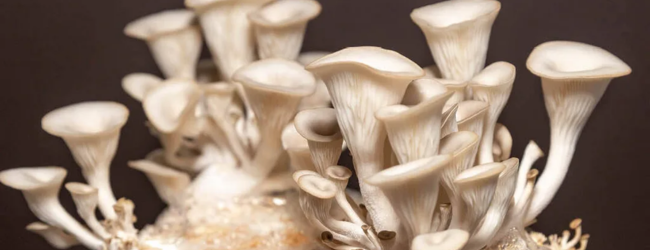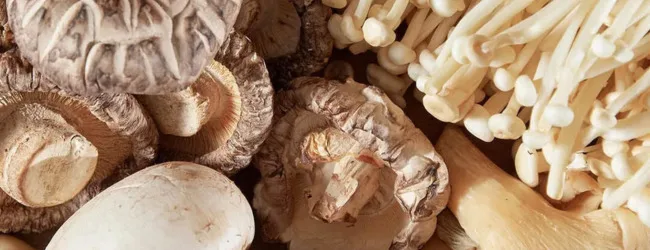Table of contents
- Why is Mushroom Farming Profitable?
- Types of Mushrooms to Grow for Profit
- Step-by-Step Guide to Starting a Mushroom Farm
- Costs Involved in Mushroom Farming
- Profit Potential of Mushroom Farming
- Tips to Boost Mushroom Farming Profits
- Common Challenges and How to Overcome Them
- Get Started with Mushroom Farming Today
- Mushroom Farming Frequently Asked Questions (FAQ)
Mushroom farming is emerging as one of the most profitable agribusiness opportunities. With low investment, high returns, and increasing demand in the market, mushroom cultivation is an excellent option for entrepreneurs and small farmers alike. If you’re looking for a business that offers steady profits with minimal space and effort, mushroom farming is the way to go.
In this article, we’ll break down how you can start a profitable mushroom-farming business step by step. We’ll cover everything from types of mushrooms to grow, setup costs, the cultivation process, and tips for marketing your mushrooms effectively.
WATCH | Earn Big with Mushroom Farming | How to Start a Profitable Mushroom Farming
Why is Mushroom Farming Profitable?
- High Demand: Mushrooms are in high demand in restaurants, supermarkets, and households for their nutritional value and culinary versatility.
- Low Investment: You don’t need expensive land or machinery to start; even small spaces can yield high profits.
- Short Growing Cycle: Some mushrooms, like Oyster mushrooms can be harvested within 4-6 weeks.
- Multiple Harvests: With the right care, you can harvest multiple crops per year.
- Health Benefits: Mushrooms are rich in proteins, vitamins, and antioxidants, which makes them a popular choice for health-conscious consumers.
Types of Mushrooms to Grow for Profit

Choosing the right type of mushroom to cultivate is essential for maximizing profits. Here are the most popular and profitable types of mushrooms:
- Button Mushrooms: The most commonly consumed mushroom worldwide. They are easy to grow and have a high market demand.
- Oyster Mushrooms: Fast-growing and can be cultivated on a variety of substrates like straw, sawdust, or coffee grounds.
- Shiitake Mushrooms: Popular for their medicinal properties and unique flavour. They are in high demand in gourmet and health-conscious markets.
- Milky Mushrooms: Suitable for tropical climates and fetch good prices in local markets.
- Reishi Mushrooms: Known for their medicinal benefits, especially in herbal medicine. These command high prices but require a longer cultivation period.
Step-by-Step Guide to Starting a Mushroom Farm
1. Research and Planning
- Understand the Market: Research local demand, prices, and potential buyers (restaurants, farmers’ markets, supermarkets).
- Choose the Mushroom Type: Decide on the type of mushroom-based on demand, ease of cultivation, and your location’s climate.
- Set a Budget: Estimate costs for substrates, spores, containers, and other essentials.
2. Select a Location
- Indoor or Outdoor Setup: You can grow mushrooms indoors (controlled environment) or outdoors (shade houses).
- Small Spaces Work: You can start mushroom farming even in your garage, basement, or a small shed.
- Climate Control: Mushrooms thrive in specific temperature and humidity ranges (e.g., 20°C-25°C with 80-90% humidity).
3. Gather Supplies
- Spawn: Mushroom spawn is like seeds for mushrooms. You can purchase spawns from reliable suppliers.
- Substrate: This is the growing medium, which can be straw, sawdust, manure, or compost.
- Containers: Use plastic bags, trays, or wooden crates.
- Equipment: Humidifiers, thermometers, and misting systems for climate control.
💡 Pro Tip: If you want to start farming but have too many doubts, connect with a farming expert from Boss Wallah for guidance – https://bw1.in/1116
4. Preparing the Substrate
- Sterilize the Substrate: Boil, steam, or pressure-cook the substrate to eliminate contaminants.
- Inoculation: Mix the spawn with the sterilized substrate.
5. Incubation
- Dark Room: Keep the inoculated substrate in a dark room with controlled temperature and humidity.
- Monitor Growth: Within 2-3 weeks, the substrate will be colonized by mycelium (white threads indicating mushroom growth).
6. Fruiting Stage
- Light and Fresh Air: Introduce light and maintain humidity to encourage mushroom growth.
- Harvesting: Depending on the mushroom type, harvest within 4-8 weeks when caps open fully.
7. Packaging and Selling
- Packaging: Use clean, breathable containers or boxes.
- Selling: Sell to local markets, restaurants, online platforms, or directly to consumers.
Costs Involved in Mushroom Farming

- Spawn: INR 200-300 per kg.
- Substrate: INR 500-1000 depending on type and quantity.
- Equipment: Basic equipment like thermometers, humidifiers, and containers can cost INR 5,000-10,000.
- Miscellaneous: Electricity, water, and labor may cost around INR 2,000-5,000 monthly.
Total Estimated Cost for a Small Setup: INR 10,000-15,000
Profit Potential of Mushroom Farming
- Yield: 1 kg of spawn can yield 4-5 kg of mushrooms.
- Selling Price: Button mushrooms sell for INR 150-200 per kg, while exotic varieties like Shiitake or Reishi can fetch up to INR 500-1000 per kg.
- Monthly Profit: For a small farm producing 100 kg per month, you can expect earnings of INR 10,000-20,000 after costs.
Tips to Boost Mushroom Farming Profits
- Diversify: Grow different types of mushrooms to attract various customers.
- Value-Added Products: Sell dried mushrooms, mushroom powders, or pickled mushrooms.
- Online Sales: Set up a website or social media page to sell directly to consumers.
- Workshops: Offer mushroom-growing classes to earn extra income.
Common Challenges and How to Overcome Them
- Contamination: Sterilize your substrate properly and maintain hygiene.
- Pests: Use organic pest control methods.
- Climate Control: Invest in proper humidifiers and temperature control systems.
Need Expert Guidance?
Starting a business can be challenging, but you don’t have to do it alone! At Boss Wallah, our 2,000+ business experts are ready to provide valuable insights and guidance. Whether you need help with marketing, finance, sourcing, or any other area of any business, our business experts are here to help you succeed: https://bw1.in/1116
Confused about Which Business to Start?
Want to start your own business but unsure which one to choose? Explore Boss Wallah, where you’ll find 500+ courses by successful business owners, featuring practical, step-by-step guides on starting and growing various businesses.
Find your perfect business idea today: https://bw1.in/1111
Get Started with Mushroom Farming Today

Mushroom farming is a lucrative and sustainable business opportunity that anyone can start with minimal investment. With proper planning, consistent effort, and a good understanding of the market, you can earn big from mushroom cultivation. So, take the plunge, start your mushroom farming journey, and watch your profits grow!
Mushroom Farming Frequently Asked Questions (FAQ)
1. What are the main benefits of starting a mushroom farming business?
Mushroom farming requires low investment, can be done in small spaces, offers high profits, and meets the high demand for nutritious and versatile mushrooms. Some types have short growing cycles, allowing multiple harvests per year.
2. What are some popular and profitable types of mushrooms to grow?
The article mentions Button, Oyster, Shiitake, Milky, and Reishi mushrooms as popular and profitable options. Button mushrooms are common and easy to grow, while Oyster mushrooms grow quickly. Shiitake and Reishi are known for medicinal properties, and Milky mushrooms suit tropical climates.
3. What are the basic steps to start a mushroom farm?
The process involves market research, choosing a mushroom type, budgeting, finding a location, getting supplies (spawn, substrate, containers), preparing and sterilizing the substrate, inoculation, incubation, fruiting, harvesting, and finally, packaging and selling.
4. What is the estimated initial cost for a small mushroom farming setup?
A small setup is estimated to cost between INR 10,000 and INR 15,000, covering expenses like spawn (INR 200-300/kg), substrate (INR 500-1000), and basic equipment (INR 5,000-10,000). Monthly running costs for utilities and labor are around INR 2,000-5,000.
5. How much can potentially be earned from a small mushroom farm?
One kg of spawn can yield 4-5 kg of mushrooms. Prices vary, with Button mushrooms selling for INR 150-200/kg and exotic types like Shiitake reaching INR 500-1000/kg. A small farm producing 100 kg monthly could potentially earn INR 10,000-20,000 after deducting costs.
6. What are the common challenges in mushroom farming?
Key challenges include contamination, pest infestations, and maintaining the correct climate (temperature and humidity).
7. How can the challenges in mushroom farming be overcome?
These challenges can be managed by properly sterilizing the substrate, using organic pest control methods, and investing in necessary climate control equipment like humidifiers and temperature controllers.
8. What are some tips for increasing profits from a mushroom farm?
The article suggests diversifying the types of mushrooms grown, creating value-added products (like pickles or dried mushrooms), selling products online, and potentially offering mushroom-growing workshops.



